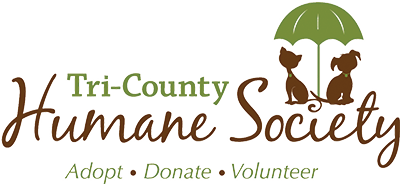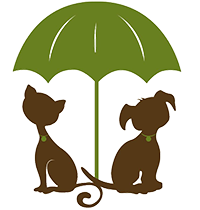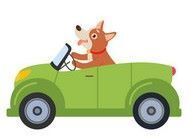A dog can become very possessive about certain objects. Guarding (also called possessive aggression) occurs with food and variety of objects valued by the dog, including favorite toys. It also may guard inappropriate objects such as shoes or a piece of trash. Attempts to remove the object from the pet may be met with an aggressive response. It may stand over its food dish, for example, and growl when approached. The warning must not be ignored because the dog could bite.
Early signs
Guarding behavior may begin as an attention-seeking game when the dog is a puppy. You may no longer enjoy the game, however, when it persists in your adult dog. Your dog may guard objects during play to attraction your attention. This is typical of dogs that “steal” objects, often in plain view, and run off. If your dog fails to engage your attention with a particular object, it may continue to test your reaction until it discovers one that works. Though playful guarding may not progress to aggressive guarding, it should not be encouraged. Many pet owners believe that guarding food indicates a dog was deprived of food as a puppy. However, this behavior is seen in dogs that have never experienced starvation. Guarding behavior must be distinguished from social dominance because it can intensely displayed even by submissive dogs. Dominant dogs that also guard may be more intensely possessive, but many dominant dogs can be unconcerned with guarding any object of value to them.
Solutions
The best way to deal with guarding behavior is to prevent it. If your dog tends to stay in the same corner or under a bed with its favorite object, block access to these hiding places. Teach your dog that giving up a possession is actually fun in the form of a game. Train it to “fetch” neutral objects (of no value to the dog) , and teach it to retrieve and return them to you. Command the dog to “sit” and “stay.” As you gently remove the object from its mouth, introduce a new command, such as “drop it” or “let go.” If you practice this frequently and offer lots of praise, the dog will associate the new phrase with relinquishing an object. After several weeks of practice, when the dog has learned the basic rules of the game, practice with a variety of objects of increasing value to the dog. Eventually, include objects that were previously guarded.
Another obedience exercise is to train the dog not to touch an object until you instruct it to do so. Place your dog in a “sit/stay” position, for example, with a food treat or toy just out of reach. Say “leave it!” as the dog maintains its position. Release the dog from this position with a command such as “okay.” You may incorporate this training as a daily ritual at meal time.
Challenge Situations
A dog will bite to guard its valued object and should not be challenged. Not matter how secure you feel with your dog under normal circumstances, do not risk injury to yourself by putting your hand or face in biting range. It may be necessary to leave the dog alone until it loses interest in the object, even if the dog may be in some danger. If your dog steals something before retraining is completed, two responses are advised:
- If the object is of no danger to the dog, ignore it. In this way, you are not reinforcing the behavior by paying attention to it.
- If the object is an obvious hazard to your dog’s health, do not panic. Calmly and without directly looking at the dog, find something of equal or greater value to the dog, such as a special food treat or even its leash. Call the dog to “come” to you and away from the object. Give no hint of anger or concern in your voice. When the dog begins to approach you, give it immediate encouragement even before it arrives at your feet. Put your dog in a “sit” position and give it a reward.
In some cases it may be effective to simply stop what you are doing and leave the room. The dog’s curiosity in your activity might exceed its interest in guarding. Be sure to remove the object, hazardous or not, as soon as possible. Place it in an inaccessible location or discard it.
Young children must never be left unattended during a dog’s feeding time or allowed to approach a dog when it is enjoying a favorite toy or treat. In such instances, you may be able to exert some control (at least long enough to remove the child or halt its progress) by applying the training you have practiced with a “leave it” command or perhaps simply calling the dog to “come” to you.
Source: "Canine and Feline Behavior Problems," Stefanie Schwartz; ASPCA









